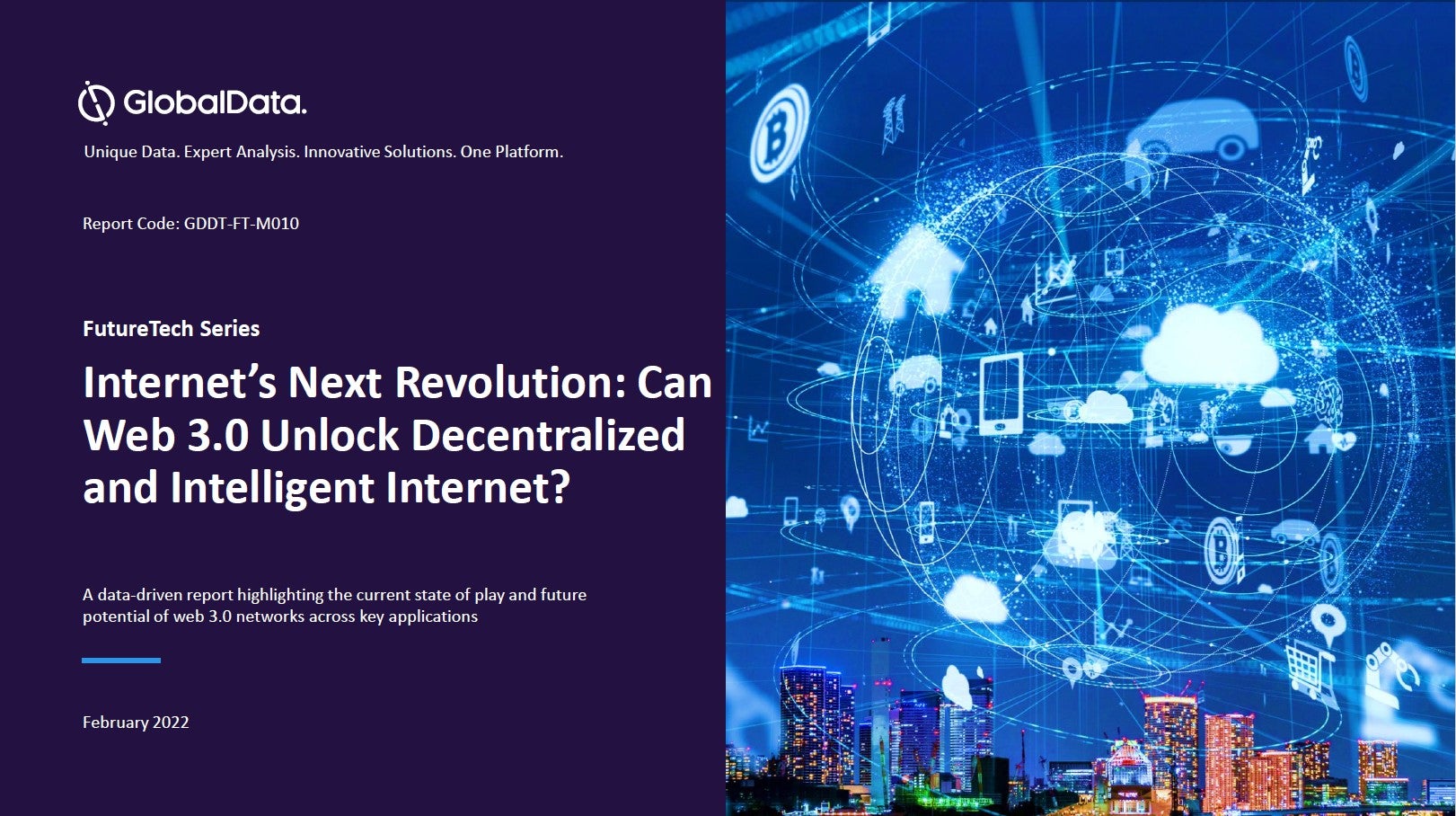
With an increase in the use and prevalence of blockchain technology, the era of Web 3.0 (or Web3) is emerging.
A recent report from GlobalData noted that, while there are some early examples of Web3 applications, most likely lie somewhere in between Web 2.0 (user generation, collaboration, interoperability etc) and Web 3.0 (decentralisation) in what is commonly referred to as Web 2.5.
The Web3 report delves into the conceptual, practical and industry analysis of the potential of the next stage of the internet, highlighting key players and value chains across the ecosystem.
The Web 2.5 ecosystem
As Web3 becomes a reality, there are several obstacles in the way for the adoption of a broader decentralised ecosystem shifting away from Big Tech and the use of consumer data.
Speaking to Verdict, Suneet Muru, one of the authors of the report, explained: “Decentralised applications (dApps) are usually very clunky and difficult to use, despite staying true to the Web3 ethos. As such, Web2 companies seized a natural opportunity to offer Web3-oriented products and services without the complications that come with dApps.”
The outcome is likely to be a compromise on full Web3 technology. Muru suggests that Web2.5 will rely on Web3-associated technologies, such as cryptocurrencies and NFTs, but in a way that still enables smooth and hassle-free user experiences.
How well do you really know your competitors?
Access the most comprehensive Company Profiles on the market, powered by GlobalData. Save hours of research. Gain competitive edge.

Thank you!
Your download email will arrive shortly
Not ready to buy yet? Download a free sample
We are confident about the unique quality of our Company Profiles. However, we want you to make the most beneficial decision for your business, so we offer a free sample that you can download by submitting the below form
By GlobalData“The caveat is that this will inevitably be at the expense of some decentralisation,” he said. “Such a model is made possible by the fact that cryptocurrencies and NFTs are still primarily associated with speculation rather than utility, meaning that a distributed network is not an essential feature for growing the Web2.5 user base.”
Regulation for Web3
As Web3 emerges, the regulatory landscape will attempt to keep pace. Currently, the lack of regulatory clarity surrounding Web3 technology also acts as a barrier to broader adoption.
There has been some movement in regulation surrounding crypto moving from a sentiment towards banning it to now focusing on regulation. Most recently the EU’s Markets in Crypto-Assets (MiCA) regulation has laid down some standards for supervision, consumer protections and environmental safeguards for crypto companies.
“Web3 relies heavily on cryptocurrencies and, as such, new legislation in the crypto space will heavily impact the Web3 value proposition,” said Muru. “Europe often sets the tone in global debates on tech regulation. MiCA is the most ambitious set of regulations to govern the use of crypto.”
“The reception for MiCA has largely been positive, but it is too early to say whether regulation will hamper or accelerate the retail adoption of cryptocurrencies. However, it is expected to accelerate the institutional adoption of crypto by removing uncertainty. It is also clear that further regulation is in the pipeline.”
How DeFi will challenge traditional banking
DeFi, short for Decentralised Finance, potentially poses a challenge to the traditional banking model used in Web2. As a blockchain-based system, DeFi uses automated smart contracts to allow peer-to-peer transactions and investments using cryptocurrencies.
Muru believes that decentralised lending could also offer the opportunity for individuals to take out loans on better terms with better interest rates and reduction in intermediary fees.
He explained: “Many DeFi protocols, particularly exchanges, are automated market makers. This means a series of smart contracts automatically govern how a protocol operates in any given scenario, eliminating the need for centralised control.”
“Many claim that this makes it less susceptible to large-scale attacks compared to the traditional banking model, as there is no single point of failure. However, exploits are more likely due to the emerging nature of the smart contracts that underpin DeFi dApps, leaving users’ funds at risk.”









